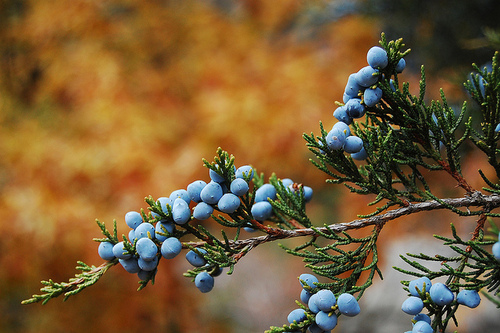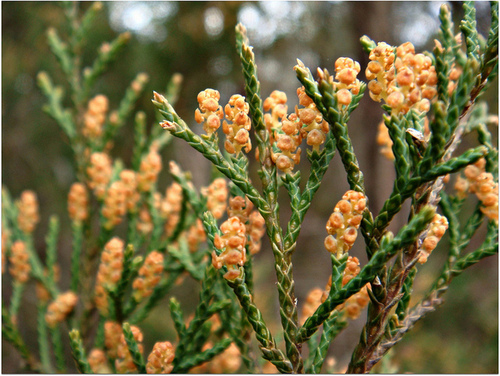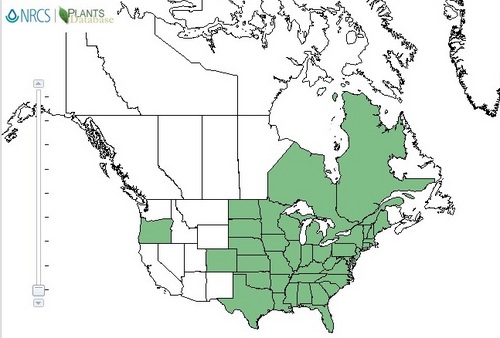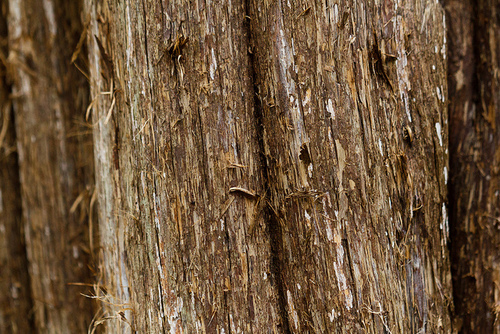Eastern Red Cedar : Description
The Eastern red cedar is a medium sized dioecious conifer, meaning it has male (staminate) cones on one plant and female (pistillate) cones on another plant. Male cones are a yellow, brown color and papery, whereas female cones stand out with their dark blue or purple hue and resemble berries. These vibrant round seeds easily ensnare the attention of animals and humans alike who make great use of them as sustenance or herbal remedies.

Female cones of Eastern Red-Cedar (Juniperus virginiana), Devils Lake State Park, Wisconsin (Gorman, 2013).
This aesthetically pleasing evergreen grows from 33 to 66 feet tall in a naturally balanced pyramidal or columnar shape. It can also reach up to 300 years old. Growing ubiquitously throughout the eastern half of the United States, it is identifiable by its characteristic shredded bark whose fibrous quality and striking color differentiate it from other coniferous neighbors. The cedar also produces three dimensional scale-like leaves rather than needles in an opposite leafing pattern. Their prickly texture distinguishes them from the softer, flatter leaves of the Northern white cedar.



